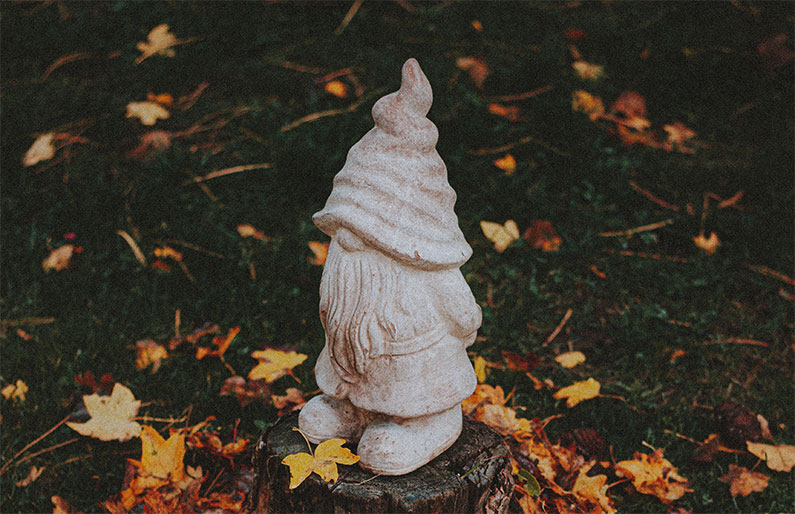
Gnomes have been a part of folklore and mythology for centuries. These mythical creatures have captured the imaginations of people around the world, inspiring stories, art, and even garden decor. In this post, we will explore the culture and society of gnomes, looking at their origins, characteristics, and impact on human culture.
Origins of Gnomes
The origins of gnomes are shrouded in mystery, with many different cultures having their own interpretations of these beings. In some traditions, gnomes are said to be nature spirits, living in forests and gardens and protecting the environment. In others, they are depicted as small, bearded men who live underground and possess magical powers.
One of the most famous depictions of gnomes comes from Germanic folklore, where they are known as kobolds. These creatures were believed to be household spirits that helped with chores around the house in exchange for small gifts or offerings. In Scandinavian folklore, gnomes were known as nisse and were said to be protectors of farmsteads and rural communities.
Social Structure of Gnomes
Gnomes are often depicted as communal creatures who live in close-knit societies. While the exact social structure of gnomes varies between different cultures, they are generally seen as living in small groups or communities, with each group having its own hierarchy and leadership.
In some traditions, gnomes are said to live in underground burrows, where they work together to maintain their homes and surroundings. They are known for their strong work ethic and dedication to their communities, with each member playing an important role in the group’s survival and success.
While gnomes are generally portrayed as friendly and helpful, they can also be fiercely protective of their communities, especially when they feel threatened. Many traditions depict gnomes as skilled warriors, using their small size and agility to their advantage in battles.
Language and Communication of Gnomes
While the language and communication of gnomes varies between different cultures, they are generally depicted as having their own unique language and means of communication. In some traditions, gnomes are said to communicate with each other using a combination of sounds, gestures, and telepathy.
In other traditions, gnomes are said to have their own distinct language, which is often difficult for humans to understand. While some humans are able to learn the language of gnomes, it is generally believed that it requires a deep understanding and connection with nature and the spiritual world.
Despite the challenges of communicating with gnomes, many people believe that these creatures have a deep wisdom and knowledge that can be accessed through careful observation and listening. Whether through telepathy or spoken language, gnomes are said to have a unique perspective on the world and can offer valuable insights to those who are willing to listen.
Art and Craftsmanship of Gnomes
Gnomes are known for their artistic and creative abilities, with many traditions depicting them as skilled craftsmen and artists. In some cultures, gnomes are said to be responsible for creating beautiful works of art, including intricate carvings, sculptures, and textiles.
Gnomes are also known for their skilled craftsmanship in areas such as metalworking, woodworking, and pottery. Many traditions depict gnomes as creating fine tools and weapons, using their small size and agility to create intricate and delicate pieces.
In addition to their practical skills, gnomes are also known for their artistic sensibilities, with many cultures portraying them as lovers of music, dance, and storytelling. They are often depicted as holding festivals and celebrations, where they showcase their artistic talents and celebrate their communities.
Characteristics of Gnomes
Gnomes are typically portrayed as small, humanoid creatures with long beards and pointed hats. They are often depicted as mischievous and playful, although they can also be wise and knowledgeable. In some traditions, gnomes are said to possess magical powers, such as the ability to shape-shift or disappear at will.
Despite their small size, gnomes are often portrayed as strong and resilient. They are known for their work ethic and dedication, whether it be tending to gardens or protecting their communities from harm. Many cultures also associate gnomes with good luck and fortune, making them popular as talismans or good-luck charms.
Impact on Human Culture
Gnomes have had a significant impact on human culture, inspiring stories, art, and even garden decor. In the 19th century, gnomes became a popular subject for children’s stories and fairy tales, with authors such as the Brothers Grimm and Hans Christian Andersen featuring these creatures in their works.
In the early 20th century, gnomes became popular as garden decorations, with many people placing small statues of gnomes in their gardens. This trend became known as the “gnome craze” and continues to this day, with gnomes remaining a popular choice for garden decor.
Gnomes have also inspired a range of popular culture, from movies and TV shows to video games and comic books. Perhaps the most famous example is the video game franchise “Gnomes Garden,” which features a world where gnomes must work together to rebuild their kingdom.
Conclusion
Gnomes may be mythical creatures, but they have had a significant impact on human culture. From their origins in folklore and mythology to their depiction in art and popular culture, gnomes have captured the imaginations of people around the world. Whether you see them as mischievous garden ornaments or magical protectors of nature, there is no denying the enduring appeal of these small, bearded creatures.

